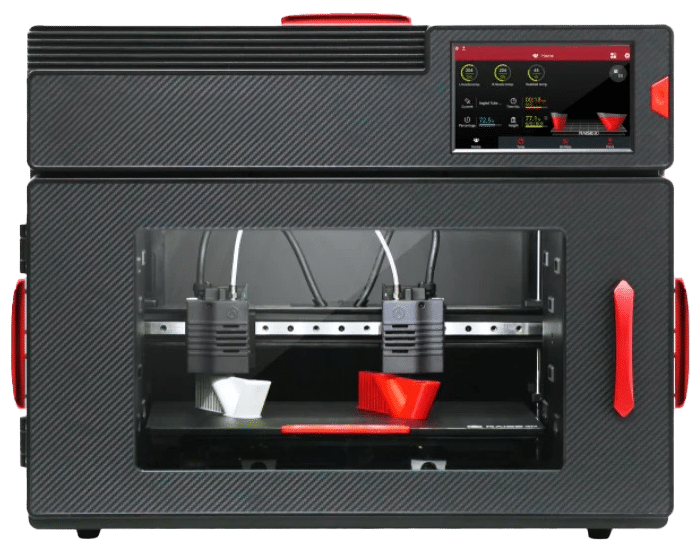Harness the advantages of 3D Printing and start producing your therapeutic insoles in-house
We offer different materials for various types of 3D printed insoles

Premium comfort with advanced flexible material, perfect for daily wear and therapeutic applications.

Revolutionary foaming technology for enhanced comfort and lightweight support.

High stiffness material for maximum support and durability.
3D printing only uses material for making the insole, nothing more.
As a result you have practically no waste.
A 3D printer works silently and clean; there’s no dust generated.
You could place the 3D printer in your practice for you clients to see.
Since there is no waste, your use of material is very economical. Use the calculator below to find out the costs of 3D printed insoles.
3D printers are no complex machines; they are easy to set-up and use.
Combined with our easy-to-use software, 3D printing insoles is a breeze.
Use this calculator to learn the costs of 3D printed insoles, depending on your monthly volume. If you provide your current costs, it also calculates how much you can save in a year!
Whether you have a small or a large practice, there is a 3D printing option right for you.

Professional-grade medical 3D printer with insole kit. The insole kit contains a dedicated printer nozzle, build plate, medical-grade filament material, software license, 3D print settings, design subscription and training specifically for insoles.

Conveyor belt medical 3D printer for 24/7 production of insoles. The monthly fee includes the 3D belt printer, software license, service ànd printing materials starting at 35 insole pairs per month.

Not yet ready to produce in-house? Then get your 3D printed insoles from a professional 3D printing company. Send them your design directly from our software and get your 3D printed insoles within a few days.
Among our team we have many years of experience in various 3D printing technologies

FootPrint3D is our partner of choice in providing us the best 3D printing filaments for our in-house production on our 30+ 3D printers

As a starting podiatrist/podotherapist, I am very satisfied with FootPrint3D's service. You decide how autonomously you proceed and always get tailor-made advice. An innovative company that, with its extensive experience, supports us as podiatrists/podotherapists in providing the best possible care. Definitely recommended!

At FootPrint3D, we find all the filaments we need for insoles, lasts and foil-fitting shoes in one place. They also have in-depth knowledge of 3D printing, which means they can always give us expert advice.

Our partner FootPrint3D provides us with a variety of high quality materials for our production facility.

We use FootPrint3D's filaments for printing lasts and test shoes and it works great. The prints are detailed and strong and the material is super easy to work with. It has made our workflow a lot smoother.
Contact our team to learn more about the 3D print production of insoles
As 3D printing afficionados, we can answer most of your 3D printing questions
Yes! You can finetune the stiffness of the entire insole as well as vary the stiffness of individual elements. E.g. you can 3D print a soft insole with a stiff metatarsal pad or for example a stiff insole with a soft metatarsal bar element. You have full control.
No. A 3D printer needs different 'instructions' than a milling machine, so you will need software that can properly control your 3D printer. Fortunately our software (LutraCAD) is very user-friendly and easy to learn.
While 3D printed TPU outshines milled EVA in terms of wear resistance, both materials exhibit gradual compression over time. EVA foam tends to permanently lose shape as it collapses, while TPU’s open structure settles gradually. As result, 3D printed insoles last as long as milled insoles.
It depends on the size, settings and infill percentage, but on average it takes 90 minutes to print an insole, so give or take 3 hours for a pair.